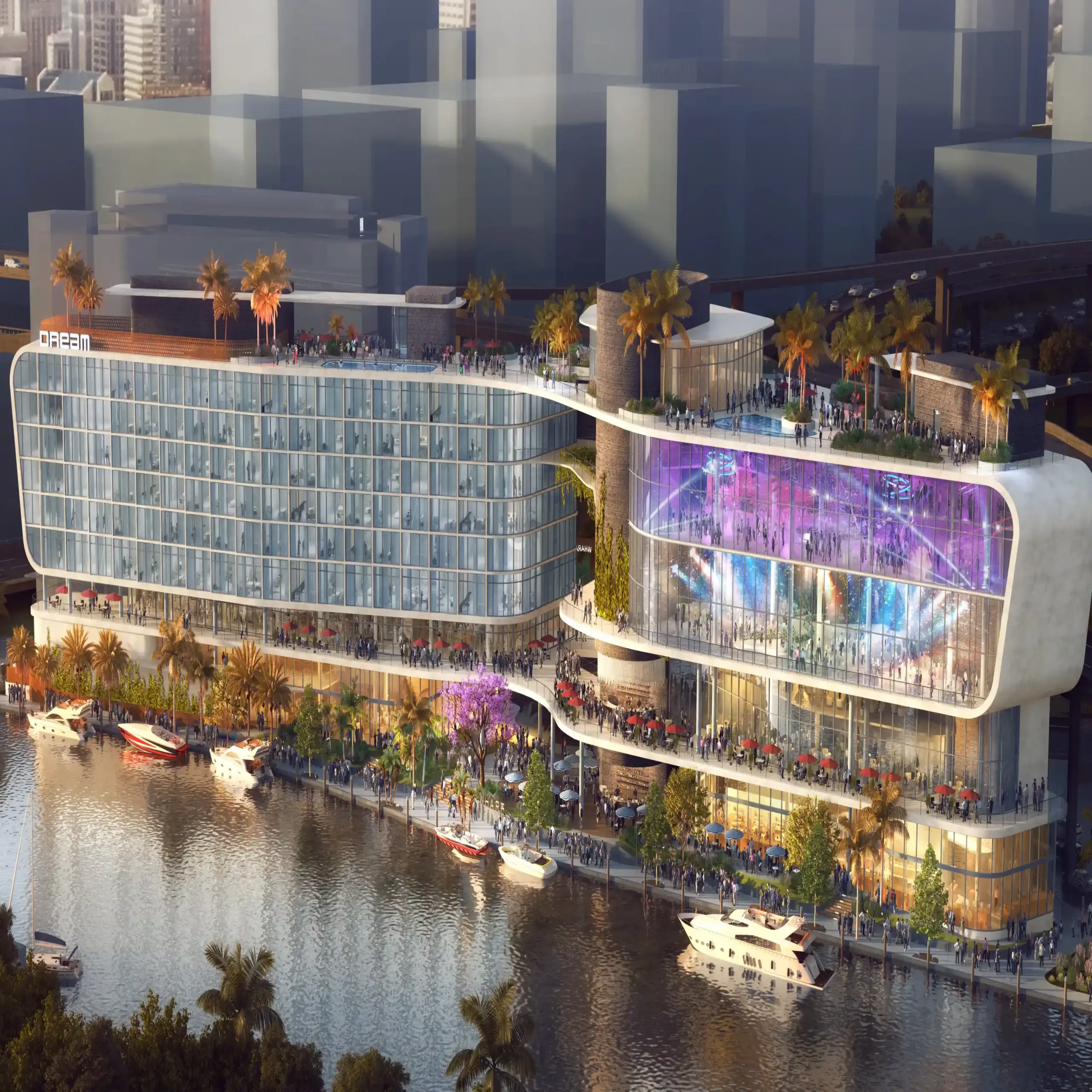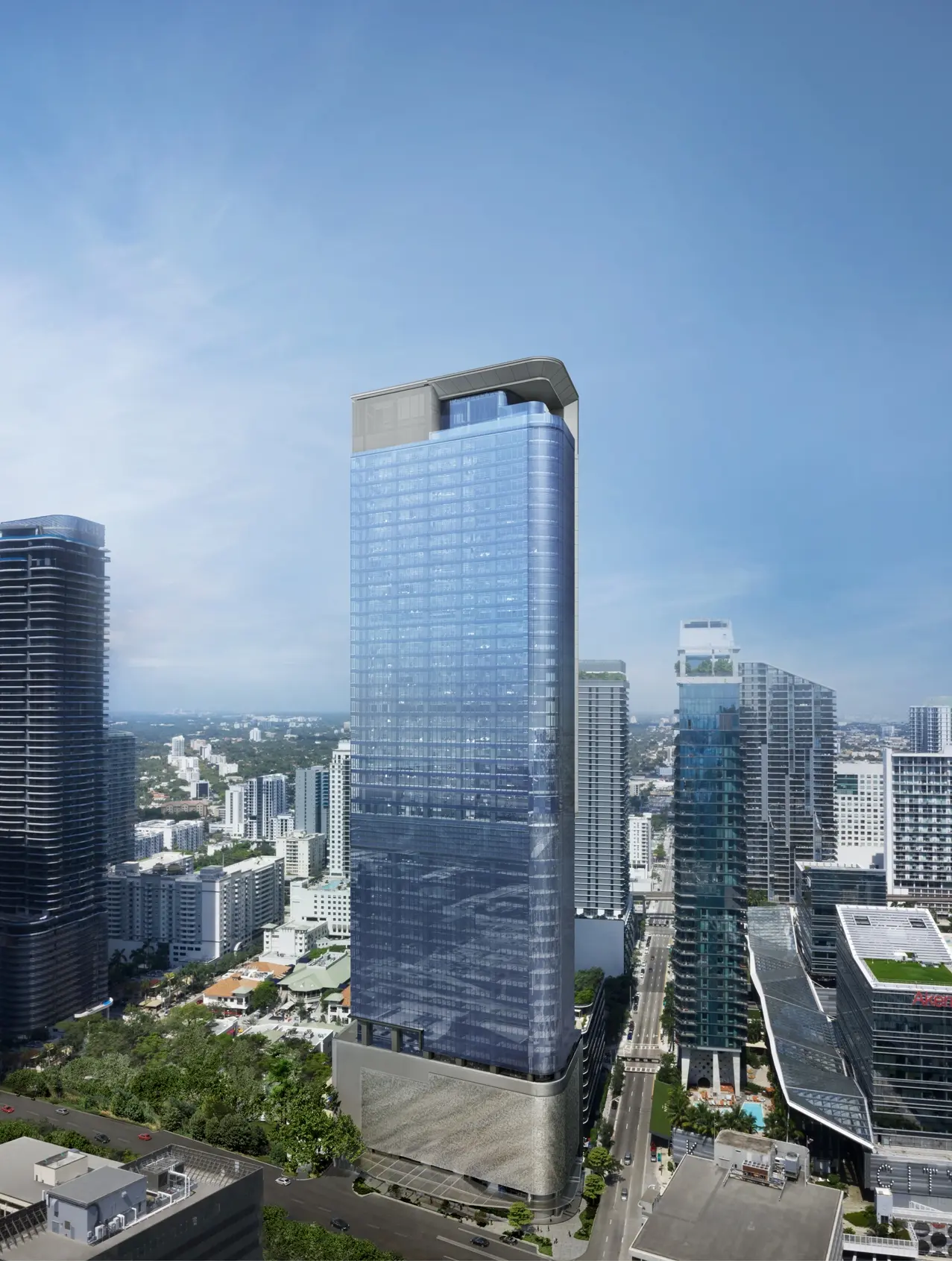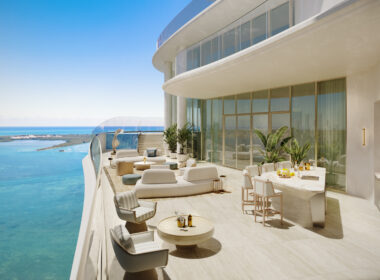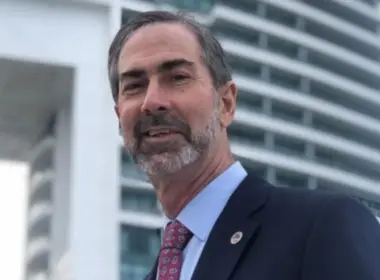Despite doubts about the U.S. economy, Miami real estate still attracts billions of foreign dollars
By Joseph A. Mann Jr.
Like an incoming tide, billions of dollars are flowing into Miami’s residential and commercial real estate market from foreign investors. Last year, foreign spending on residential properties crested $6.8 billion, rising sharply from the previous year. Overseas capital for the commercial sector – the money used to build not only residential high-rises but office, retail, and mixed-use buildings – topped $1.3 billion, though that was a decline from the previous year, attributed to both the aggressive increase of capital from domestic sources and rising interest rates.
While overseas capital inflows have not yet reached pre-COVID levels, they are rising especially fast for the residential market and, in spite of the commercial drop for 2022, foreign money is still a key source for financing projects.
“About 35 percent of our commercial transactions are from foreign capital sources,” says Michael Fay, managing director of the Miami office of Avison Young, the firm handling the sale of the 15.5-acre waterfront parcel in Downtown Miami owned by Malaysian casino company Genting. “But if you look at some of the local and regional developers, that number is probably higher [because] a lot of these major developers will partner with foreign investor funds for the equity.”
The new downtown 830 office building, for example, is a joint commercial project between the U.S.-based OKO Group and London-based Cain International. A planned 1,000-foot-tall office tower at Miami’s Brickell Centre will be a joint venture between Stephen Ross U.S.-based Related Companies and Hong Kong and London-based Swire Group.


“Foreign investment plays a fundamental role in Miami real estate development today,” says Alirio Torrealba, the CEO of MG Developer, known for its high-end residential buildings, including Mediterranean-style townhome projects in Miami’s posh suburb of Coral Gables. “Foreign investors are an active community in the real estate sector, and there are important capital-management groups that work with key developers in the sector.” MG Developer works with Brazilian and Peruvian investors, as well as with U.S. investors, for a mix of financing from local financial institutions and overseas capital.
The more direct presence of foreign commercial investment can be seen in projects like the $400 million, 72-story downtown Okan tower, currently under construction and financed entirely by Turkish industrialist Bekir Okan. Or the recently approved $300 million mixed-used project on Miami’s 79th Street Causeway by the Jesta Group of Montreal. And bids are coming in from multiple foreign sources in excess of $1 billion for the downtown Genting parcel, which can be developed into 20 million-square-feet of office, retail, hotel, and residential buildings.

Coral Gables-based Driftwood Capital, for one, saw a steady flow of new international funds for its hotel projects in 2022. “In the past few months alone, foreign investors have committed more than $150 million to Driftwood projects,” says CEO Carlos Rodriguez Sr. And for 2023, he expects a steadily growing flow of funds. “The pace of foreign capital flows to Miami is only getting stronger,” says the CEO, whose firm invests in and develops hospitality projects while also providing lending and management services. Its current $3 billion project portfolio has 1,200 international investors who have acquired shares in their investment fund.
“The more turmoil there is in the world, the more capital
will flow to cities like Miami, which is considered a safe haven for investment,” Rodriguez says – noting that since the COVID pandemic, “international capital is now competing with the domestic capital moving in from New York, California, and Chicago. This has provided jet fuel to Miami’s growth.” Driftwood’s projects include the Riverside Wharf/Dream Miami hotel, a $185 million joint venture with MV Real Estate Holdings.
THE RESIDENTIAL RISE
While foreign investments into commercial projects remains strong, the residential side of Miami real estate is exploding. Foreign residential purchases in the last full year measured by the Miami Association of Realtors climbed 34 percent, reaching $6.8 billion from the previous year’s total of $5.1 billion. The comprehensive December 2022 report published by the Miami realtors’ group and the National Association of Realtors covers the period from August 2021 through July 2022.
Foreign buyers came from 54 countries, with the largest shares of the total from Argentina (16%), Colombia (13%), Canada (8%), Peru (8%), and Chile (6%). Foreigners bought 9,400 homes in the year covered, compared to 7,500 the previous year. Two-thirds of the international buyers – foreign individuals, companies, family offices, trust accounts, etc. – paid in cash. And the total foreign investment figure is higher than reported; the Miami Realtors’ total relies on the MLS (Multiple Listing Service), but many sales are made directly between seller and buyer without listing the properties.

Edgardo Defortuna, founder, president, and CEO of Miami-based Fortune International Realty (FIR) and its parent, Fortune International Group, has seen investment from 38 different countries for his residential and commercial businesses, “at last count,” he says. “Sales were extremely strong in 2022 and money has predominantly come from the U.S., Mexico, Colombia, Argentina, and Brazil. 2022 was probably our second or third best year. Since the 1980s, there has been a constant wave of international buyers acquiring properties in the area as second homes or as investment vehicles to diversify and/ or to protect their assets. Foreigners feel at home when spending time in South Florida because of our diversity and they continue to be a very important part of the overall luxury market.” Among the properties FIR developed, marketed, and sold in South Florida are the Ritz-Carlton Residences Sunny Isles Beach, Brickell Flatiron, 2000 Ocean, and Jade Signature.
“Since COVID, our firm has seen a huge push in domestic buyers – from New York and California – and recently some South American money, especially from Colombia,” says Victor Hernandez, principal of Haute & Boss, a construction design and management firm that specializes in ultra-luxury residences and high-end commercial properties. Indeed, interest from Colombian buyers
in particular has been rising, according to the Miami Association of Realtors. Colombians posted the most web searches for Miami homes in December (11.81%), followed by China (11.78%), Venezuela (6.48%), and Argentina (6.24%). The biggest month-over-month jump came from Brazil, moving from No. 12 to No. 7 in the list of queries, spurred by the election of leftist Luiz Inácio Lula da Silva as Brazil’s new president.
Nicolas Perez, senior vice president of Miami-based Related Group, said his company has seen an uptick in condo buyers from Brazil since the recent elections there, as well as clients from Venezuela, Chile, and Mexico.
Related, one of the top developers of Miami high-rise residences and a leading marketer to foreign buyers, recently partnered with Nitin Motwani in developing The Crosby luxury residences at Miami Worldcenter (see story pg. 56). Perez says there is a 60/40 mix of South American to domestic buyers for units in this property, and that he expects turmoil in Latin America to drive more investment to Miami real estate. (Another nearby project, the 600 Miami Worldcenter building, is seeing 75 percent of units going to foreign buyers.)
Related, with properties ranging from affordable housing to mixed-use centers and luxury condos, has operations throughout the U.S. and Latin America. “It’s very important to build a critical mass of market-priced and affordable units in Miami,” says Perez. “You can’t be a great city and grow without everyone coming up together.”
MIAMI’S PRIVILEGED POSITION
Despite some doubts about the short and mid-term economic future of the U.S. economy, Miami’s residential and commercial real estate markets enjoy a privileged position among competing U.S. markets, bolstered by strong economic growth, business-friendly policies, and the city’s role as an international capital.
According to Colliers Real Capital Analytics, Canada, Thailand, Australia, the United Arab Emirates, and Spain were all leading sources of foreign capital in 2022. Colliers, a top international real estate investment management and services firm, said that foreign investors were net sellers of Miami commercial properties in 2022, in keeping with a trend affecting other U.S. markets, and that “the second half of 2022 saw all investment activity cool off ” due to market uncertainty, inflation, and high-interest rates.
However, “South Florida stands out from the nation with its strong market fundamentals” and “its commercial real estate market continues to outperform against other markets in the U.S.,” Colliers said in a report. Florida is one of the top states receiving foreign investment in commercial properties, and Miami-Dade and Broward counties ranked among the top U.S. markets in attracting foreign capital last year. Canadian investors (part of Toronto’s Catalyst Capital Group), for example, recently bought The Balfour Hotel in South Beach for $39.3 million. On the residential side, Florida has been the top state for foreign buyers for 14 years, consistently beating California, Texas, and Arizona. At Miami Worldcenter, buyers from over 50 countries have purchased residences in the massive (569-unit) Paramount luxury condo tower, now completed.

“The current upheaval of democratic institutions in Latin America directly correlates to increased foreign investment in Miami because corporations and family offices in these countries are reallocating their global capital with a flight towards security in U.S. property,” says Suzanne Hollander, associate teaching professor at the Hollo School of Real Estate at Florida International University. During the early days of this year, political instability led to political violence that “shook the democratic institutions of Brazil and Peru, shocked the market, and interrupted logistics and business operations. During 2022, Chile experienced political turmoil as it tried to change its constitution to devalue property rights as well.”
As for foreign investment, “Uncle Sam is the best business partner,” says Hollander. “This means that the U.S. is the safest country to buy property in because of the transparency of its real estate market data, the stability of the U.S. dollar, and U.S. government enforcement and protection of private property rights for both citizens and non-citizens.”
“We remain extremely confident in Miami’s future and the role that premium office assets will play in its expansion into a global gateway city,” says Jonathan Goldstein, co-founder and CEO of Cain International. “When [co-founder] Todd Boehly and I set
up Cain, we had a very simple philosophy. We like to invest in gateway cities. If you look at the vast majority of our investments, they are in New York, Boston, Los Angeles, Madrid, London, and Miami…. Miami has been undervalued in terms of the rest of the world. And it has a taxation environment that most people find desirable.”
And as for the impact of foreign investment in the Miami real estate market? “Increased foreign investment fuels Miami’s transformation from a tropical beach town to a dynamic global metropolis full of people who speak Spanish, English, and Portuguese, at minimum, and bring new ideas for innovation development and growth,” Hollander says. “Increased demand drives up property values [and] increases property tax collection, leading to the availability of more public services.” On the negative side, “Increased demand drives up purchase prices, sometimes squeezing local buyers out of the market.”












